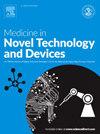应用深度学习技术诊断婴儿不同类型单缝合线颅缝闭锁
Q3 Medicine
引用次数: 0
摘要
颅缝闭闭(CSO)的特点是婴儿颅骨缝合线过早融合。一个或多个主缝合线的过早闭合可导致各种颅骨和面部畸形,并可能导致儿童发育迟缓。早期诊断对有效治疗至关重要,传统上依赖于身体检查和3D颅脑成像,这往往是不准确的,或者有x射线暴露的风险。本研究提出了一种基于全自动深度学习的方法,用于使用婴儿头部的常规数字照片诊断常见类型的单缝线CSO。我们采用了两阶段的方法,包括头部分割和CSO类型分类。首先,采用基于mask区域的卷积神经网络(mask R-CNN)进行准确的头部分割,平均分割精度为97.60%,平均召回率为96.20%。然后使用改进的VGG11神经网络将分割后的图像分类为不同的CSO类型。该分类器的训练准确率为99.74%,测试准确率为94.44%,对单冠状、异位和矢状型具有很高的敏感性和特异性。该方法具有较高的可靠性和准确性,为早期发现和患者筛查提供了无创、方便、准确的诊断工具。本文章由计算机程序翻译,如有差异,请以英文原文为准。
Diagnosis of different types of single suture craniosynostosis in infants with deep learning techniques
Craniosynostosis (CSO) is characterized by premature fusion of skull sutures in infants. This early closure of one or more main sutures can lead to various skull and facial deformities and may cause developmental delay in children. Early diagnosis, crucial for effective treatment, traditionally relies on physical examination and 3D cranial imaging, which are often inaccurate or with the risk of X-ray exposure. This study presents a fully-automated deep learning-based method for diagnosing common types of single suture CSO using routine digital photographs of infants' heads. We employed a two-stage approach involving head segmentation and CSO type classification. First, mask region-based convolutional neural network (Mask R-CNN) was used for accurate head segmentation, achieving an average precision of 97.60 % and an average recall of 96.20 %. The segmented images were then classified into different CSO types using a modified VGG11 neural network. The classifier attained a training accuracy of 99.74 % and a test accuracy of 94.44 %, with high sensitivity and specificity for uni-coronal, metopic, and sagittal types. Our method illustrates high reliability and accuracy, offering non-invasive, accessible and accurate diagnostic instrument for early detection and patient screening.
求助全文
通过发布文献求助,成功后即可免费获取论文全文。
去求助
来源期刊

Medicine in Novel Technology and Devices
Medicine-Medicine (miscellaneous)
CiteScore
3.00
自引率
0.00%
发文量
74
审稿时长
64 days
 求助内容:
求助内容: 应助结果提醒方式:
应助结果提醒方式:


